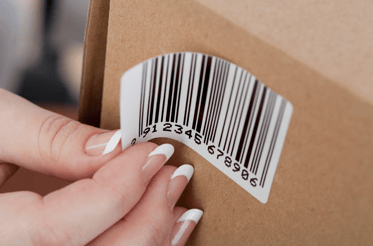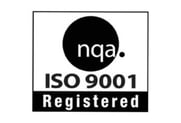Variable data printing is a printing technique that allows for the customization of printed materials with unique text, graphics, or images on each piece. This is achieved by using digital printing technology and software that can handle data-driven printing, also known as "on-demand printing." At Design Mark, we have a family of 4 indigo machines that have the advanced capability to print variable data.
In the printing industry, variable data printing is commonly used in the production of labels including barcode and QR code labels. Labels are an important part of the packaging process, as they provide information about the product, such as its name, ingredients, and expiration date. By using variable data printing, companies can easily produce labels with unique information for each product, rather than printing large batches of labels with the same information.

One of the benefits of variable data printing for labels is that it allows for greater personalization and targeting. Companies can use the unique data associated with each product to create customized labels that appeal to specific demographics or markets. For example, a company that sells energy drinks might create different labels for different flavors, targeting different age groups or lifestyles. The medical industry may need variable data labels to ensure the accurate identification and traceability of products. This can include information such as lot numbers, expiration dates, and dosage instructions which can change from batch to batch or from product to product. Variable data labels can also be used for tracking and inventory management as well as for compliance with regulations and standards such as the U.S Food and Drug Administration (FDA) and the International Organization for Standardization (ISO).
Another advantage of variable data printing is that it can save time and resources. Instead of setting up a traditional printing press to print large batches of labels, a company can use digital printing technology to produce labels on demand. This means that labels can be printed as needed, reducing the need for large inventory storage and the associated costs.
Variable data printing also offers greater flexibility and scalability. Companies can easily make changes to the design or content of their labels, and they can produce labels in small or large quantities as needed. This is particularly useful for companies that experience fluctuations in demand or that need to regularly update their labels with new information.

There are several types of digital printing technologies that can be used for variable data printing, including inkjet, laser, and thermal transfer. Inkjet printers use tiny droplets of ink to produce high-quality images and text, while laser printers use a laser beam to transfer toner onto paper. Thermal transfer printers use heat to transfer ink from a ribbon onto the label material.
To use variable data printing, Design Mark uses a software that allows us to import and manipulate data, design the layout of the labels, and specify the variables that will be used for customization. The software can also be used to track and analyze the data used in the printing process, providing valuable insights into the effectiveness of the labels.
Overall, variable data printing is an important tool for the printing industry, particularly for the production of labels. It allows for the customization of labels with unique information, saves time and resources, offers flexibility and scalability, and provides valuable data insights. As such, it is likely to continue to be a popular choice for companies looking to produce high-quality labels that meet the needs of their customers.




.png?width=450&height=247&name=MicrosoftTeams-image%20(13).png)






